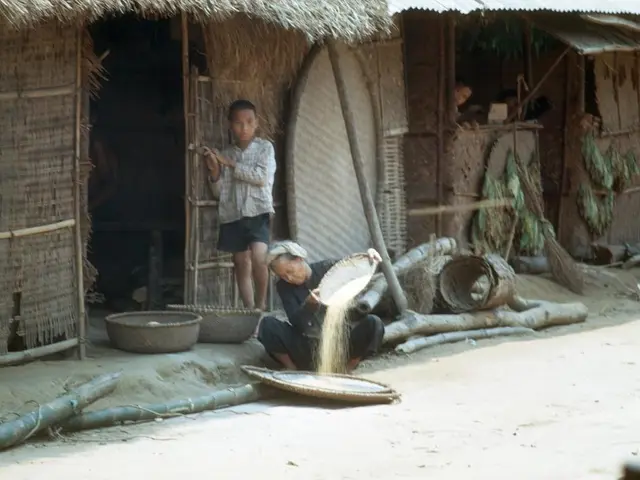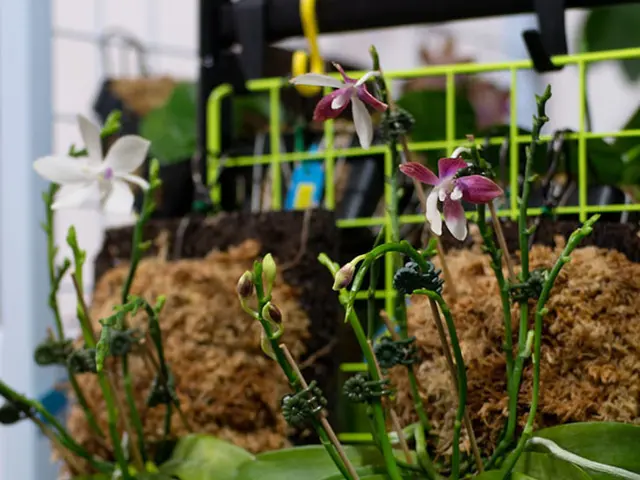Astonishing Findings: Big Heads Owe Their Size to Abundant Potassium and Phosphorus!
Maximizing Garlic Bulb Size: The June Feeding Technique - Boosting Potassium and Phosphorus Levels: Top Fertilizers, When, and How
Fancy enormous, tantalizing garlic bulbs fit for long-term storage? The secret is proper June feeding for your garlic! This is when active bulb formation begins, and the plant requires completely different elements compared to spring. Adequate levels of potassium (K) and phosphorus (P) are essential, while nitrogen is out!
Why June Matters
- Winter garlic actively grows cloves and stores nutrients in the bulb during June.
- Summer garlic enters the bulb formation phase.
- Nitrogen encourages excessive leaf growth at the expense of the bulb, resulting in small, loose heads that don't store well.
Top Fertilizers for Garlic in June:
- Wood Ash: A natural ace! Provides potassium, phosphorus, calcium, and microelements.
- Infusion: 1-2 cups of ash in 10 liters of hot water, let it sit for 1-2 days. Water 0.5 liters per plant or 5 liters/m² of the bed. - Dry fertilization: Evenly sprinkle 1 cup of ash per m² of the bed, water well and gently mix into the soil.
- Potassium sulfate (Potassium sulfate): 15-20g (1 tbsp) per 10 liters of water. Water 5 liters/m².
- Superphosphate: 30-40g (2 tbsp) per 10 liters of water. Important: Dissolve in hot water in advance and let it sit for a day, stir and strain before watering. Water 5 liters/m².
- Monopotassium phosphate: 10-15g per 10 liters of water. A fantastic easily absorbable option. Water 5 liters/m².
- Folk recipe (use with caution): 1 cup of ash + 1 tbsp of rock salt without a hill on 10 liters of water. Water 3 liters/m². Do not use on saline soils!
Garlic Feeding: When and How
- Time: Feed early to mid-June. Indication: winter garlic has 5-6 leaves and the bulb is starting to form; summer garlic is actively gaining mass.
- Rule: Only water pre-moistened soil!
- After feeding: Gently loosen the soil or add mulch (compost, cut grass).
- Prohibition: No urea, ammonium nitrate, fresh manure, or compost!
Remember! One timely and correct potassium and phosphorus feeding in June is your passport to powerful, juicy bulbs and an exceptional harvest. Don't miss this critical stage.
Earlier, we detailed how to care for garlic.
Additional Tips for Growing Garlic
- Before fertilizing, conduct a soil test to determine the current nutrient levels.
- Organic matter, such as compost, improves soil structure and nutrient availability.
- Use a balanced to high phosphorus fertilizer, favoring phosphorus over nitrogen, to promote root development and bulb formation.
- Consider adding potassium-rich supplements to ensure adequate potassium levels in the soil.
- Apply fertilizers evenly around the garlic plants, avoiding direct contact with the bulbs.
- Green beans or other legumes make excellent companion plants, as they enhance soil nitrogen levels, but may be inhibited by garlic if planted too close.
By following these suggestions, you'll be able to enlarge your garlic bulbs by supplying them with optimal potassium and phosphorus levels during June. Happy growin'!
- To nurture large, storable garlic bulbs, focus on supplying high potassium and phosphorus levels during the June feeding stage when the bulbs are forming.
- Enhance your home-and-garden lifestyle by growing a beautiful and bountiful garlic harvest with proper June feeding techniques, ensuring your garden's lifestyle stays just as attractive as your home-and-garden decor.







